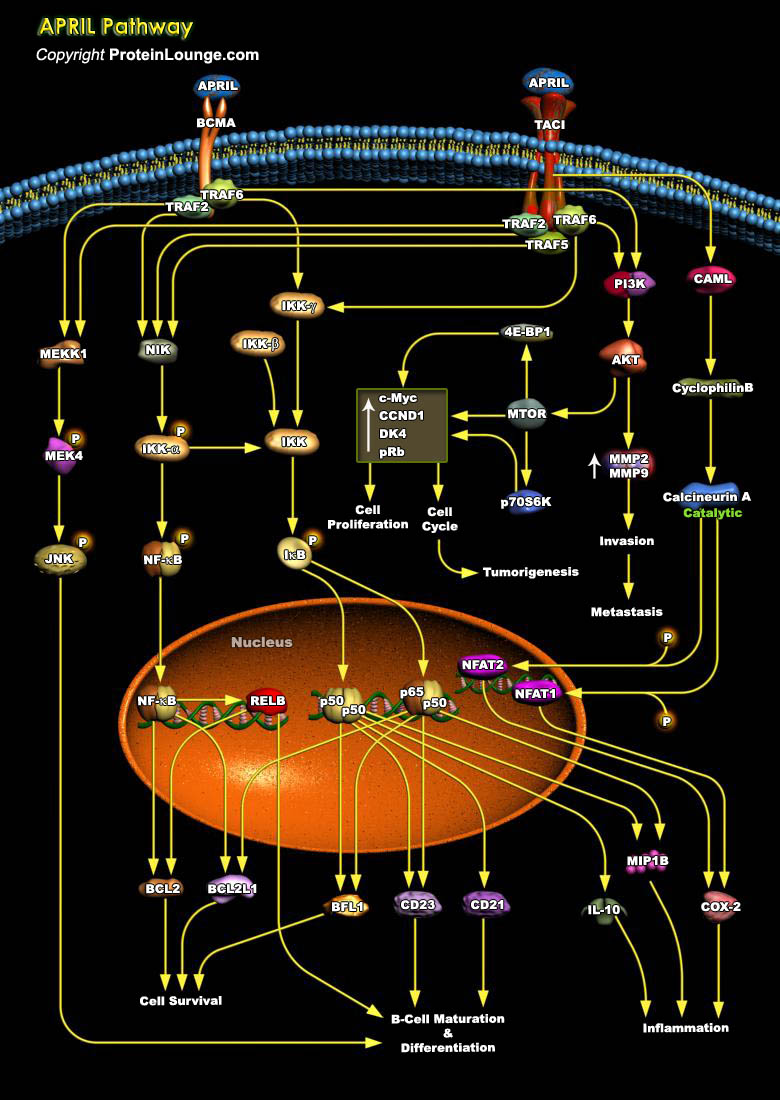Featured Pathways

The major DNA Repair mechanisms take advantage of the facts that DNA is double-stranded and the same information is present in both strands. Consequently, in cases where damage is present in just one strand, the damage can be accurately repaired by cutting it out (excision) and replacing it with new DNA synthesized using the complementary strand as template. All organisms, prokaryotic and[..]


The cellular response to O2 (oxygen) is a central process in animal cells and figures prominently in the pathophysiology of several diseases, including cancer, cardiovascular disease, and stroke. This process is coordinated by the HIF (Hypoxia-Inducible Factor) and its regulator, the pVHL (Von Hippel-Lindau tumor suppressor protein). HIF1 is a basic helix-loop-helix transcription factor that[..]


4-1BB is an inducible T cell surface receptor belonging to the tumor necrosis factor receptor super family. It presents on the surfaces of activated CD4+ and CD8+ T cells, monocytes and B lymphocytes. 4-1BB signaling is activated by binding to its high-affinity ligand 4-1BBL which is expressed on the surface of antigen-presenting cell. 4-1BB signaling promotes cell growth, T cell[..]

APRIL (a proliferation-inducing ligand, also known as TRDL-1, TALL-2, and TNFSF13), is a member of the TNF (tumor necrosis factor) superfamily, with homologous structure and function to several other cytokines in this family. It is a cytokine which is over-expressed by transformed cells and could stimulate cellular proliferation (Ref.1) It has two receptors i.e BCMA and TACI (Tumor necrosis[..]


Protein synthesis in eukaryotic organisms is a complex process that requires cooperation among a large number of polypeptides including ribosomal proteins, modification of enzymes, and ribosome-associated translation factors. The initiation phase of protein synthesis, during which ribosomes select mRNAs to be translated and identify the translational start site, requires a set of eIFs[..]

The ERBB (Erythroblastic Leukemia Viral Oncogene Homolog) family of transmembrane RTKs (Receptor Tyrosine Kinases) plays an important role in the pathogenesis of many cancers. This family is comprised of four members EGFR (Epidermal Growth Factor Receptor), ERBB2, ERBB3, and ERBB4, ERBB2 also called HER2 (Heregulin-2) and ERBB3 are closely related to the EGFR/ERBB1, but unlike EGFR, ERBB2 is a[..]

Protein synthesis regulation in eukaryotes is important for the modulation of gene expression. The process of mRNA translation/protein synthesis is generally initiated by eukaryotic initiation factors (eIFs), which along with p70S6K play critical roles in translational regulation (Ref.1). During mRNA translation, eukaryotic initiation factor 4E (eIF4E) (the m7GTP cap-binding[..]

The ERBB (Erythroblastic Leukemia Viral Oncogene Homolog) or EGF (Epidermal Growth Factor) family of transmembrane RTKs (Receptor Tyrosine Kinases) plays an important role during the growth and development of a number of organs including the heart, the mammary gland, and the central nervous system. In addition, ERBB overexpression is associated with tumorigenesis of the breast, ovaries, brain,[..]

ERBB4 (Erythroblastic Leukemia Viral Oncogene Homolog-4) is a 180-kDa transmembrane RTK (Receptor Tyrosine Kinase) that regulates cell proliferation and differentiation. The ERBB4 is a member of the EGFR (epidermal growth factor receptor) subfamily of transmembrane RTKs. ERBB4 is expressed in several tissues, mainly heart, mammary gland and the central nervous system. ERBB4 and its ligands[..]




















